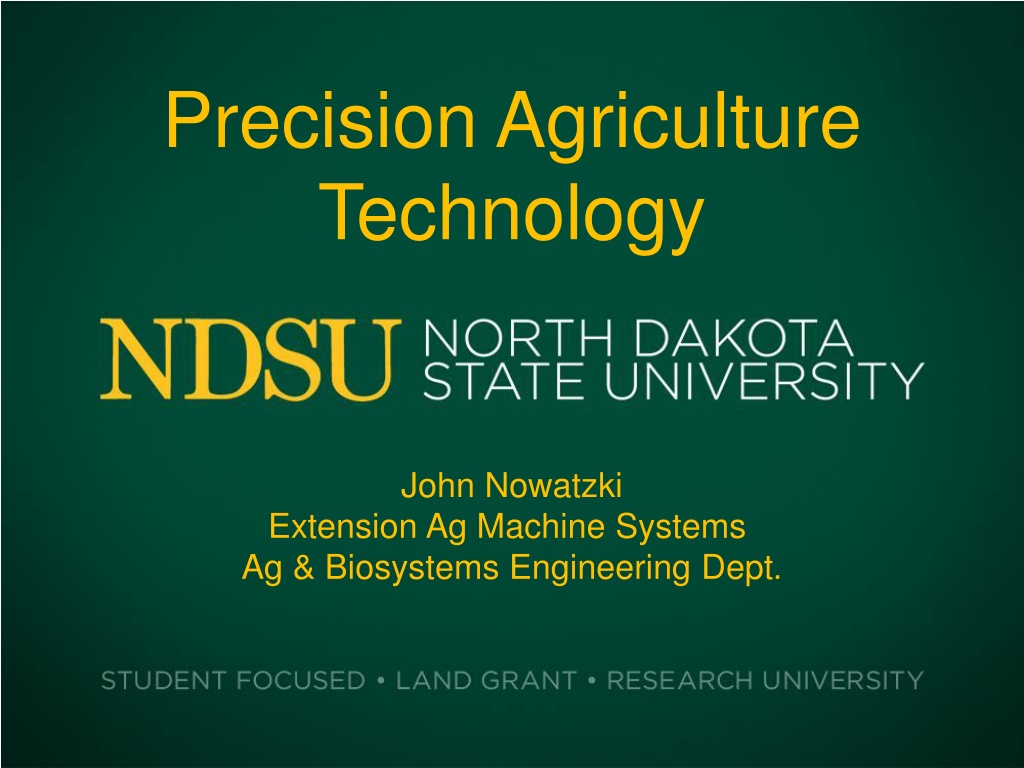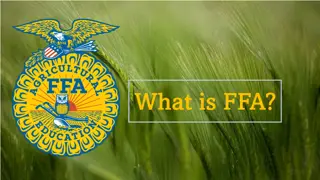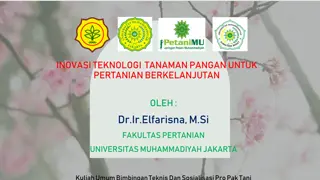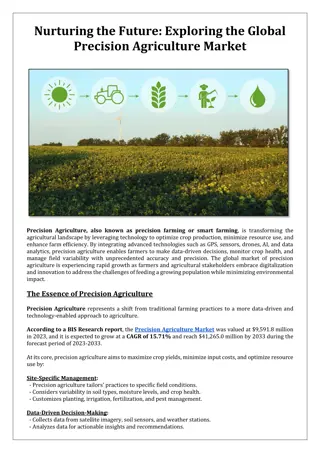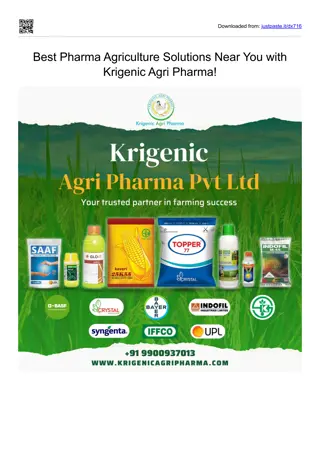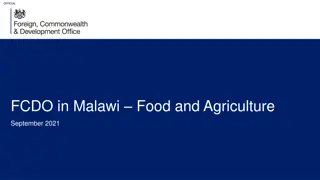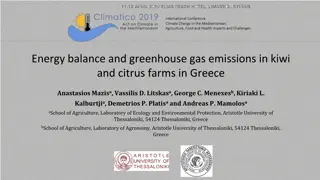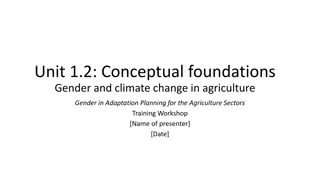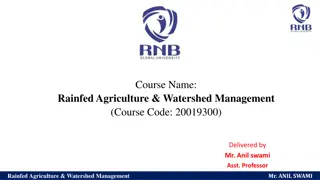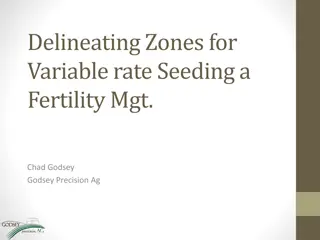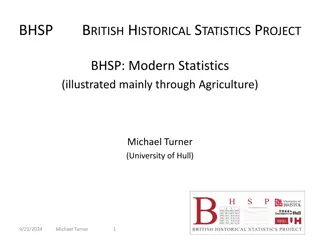Precision Agriculture Technology Overview
Precision agriculture technology has transformed farming practices with advancements such as GPS guidance, remote sensing, variable rate application, and autonomous vehicles. Adoption rates of technological innovations vary, with some being embraced quickly like herbicide-tolerant crops while others, like the transition from horses/mules to tractors, have been slower. Key technologies include GPS guidance for autosteer and section/row control, yield monitoring with data management, remote sensing with satellite imagery, and variable rate fertilization equipment. Field management zones and application maps play a crucial role in maximizing efficiency and productivity in modern agriculture practices.
Download Presentation

Please find below an Image/Link to download the presentation.
The content on the website is provided AS IS for your information and personal use only. It may not be sold, licensed, or shared on other websites without obtaining consent from the author.If you encounter any issues during the download, it is possible that the publisher has removed the file from their server.
You are allowed to download the files provided on this website for personal or commercial use, subject to the condition that they are used lawfully. All files are the property of their respective owners.
The content on the website is provided AS IS for your information and personal use only. It may not be sold, licensed, or shared on other websites without obtaining consent from the author.
E N D
Presentation Transcript
Precision Agriculture Technology John Nowatzki Extension Ag Machine Systems Ag & Biosystems Engineering Dept.
GPS and Computers Guidance Section and Row Control Yield Monitoring and Data Management Remote and In-Field Sensing Variable Rate Application Telematics Autonomous Vehicles
Some Technologies Adopted Quickly! Adoption of herbicide-tolerant crops 100 soybeans 80 cotton 60 Percent corn 40 20 0 1995 1997 1999 2001 2003 2005 2007 2009 Source: USDA/ERS Dietrich Kastens
Some Technologies Adopted Slowly! Horses/mules and tractors on U.S. Farms 25 5 millions of horses & mules 20 4 tractors millions of tractors horses & mules 3 15 10 2 1 5 0 0 1900 1920 1940 1959 1982 1997 2007 1910 1930 1950 1969 1992 2002 Source: U.S. Census of Agriculture Source: U.S. Census of Agriculture Dietrich Kastens
GPS Guidance GPS-assisted Autosteer GPS Correction Options: Free GPS Corrections Commercial Options CORS Internet-based RTK
Section and Row Control Sprayers Planters Air Seeders
Yield Monitoring and Data Management Yield Monitors with GPS GIS Programs
Remote and In-field Sensing Satellite Imagery Aerial Photography Electrical Conductivity (EC) In-field Infrared Chlorophyll Meters
Variable Rate Fertilization Equipment and Technology Zone Maps Equipment Capable of Changing Rates In-cab Computer Controller GPS Farmer Equipment Options: Fertilizer Applicator Air Seeder Planter Commercial Options Consultant Services for Maps Fertilizer Companies
Field Management Zones and Application Maps (NDSU Soils Specialist Dave Franzen) Management Zones Areas of Uniformity Topography Remote Imagery Electrical Conductivity Yield Frequency Map Digital Soil LiDAR Grower Knowledge
Telematics On-the-go Transfer of Data Remote Diagnostics Error Codes Combine Threshing Efficiency Machine Location
Autonomous Vehicles Mechanical Weeding Row Crop Tillage
Summary Zone Maps Imagery, EC, Multi-year Yield, Topography Consultants; Learn Software Application Maps Soil Test Each Zone Application Maps Modify Existing Equipment vs. New Equipment Compare Variable Rate to Constant Rate
Questions - Comments Office 701-231-8213 Cell 701-261-9842 John.Nowatzki@ndsu.edu http://www.ag.ndsu.edu/agmachinery/precisionagriculture
